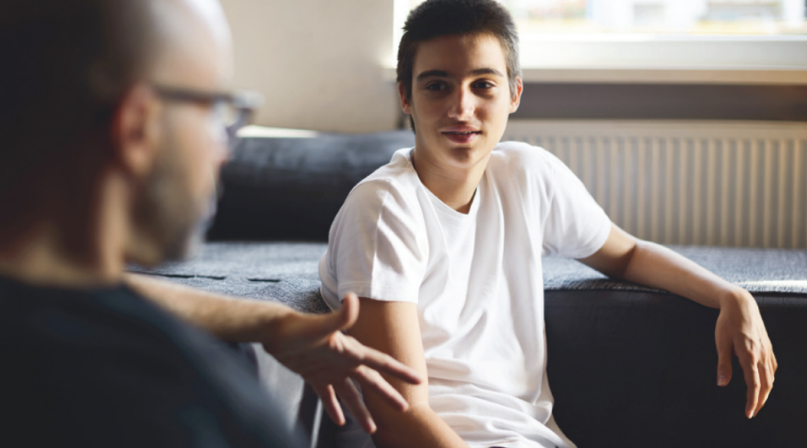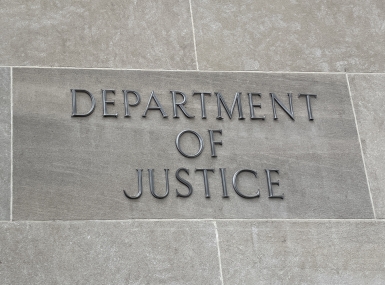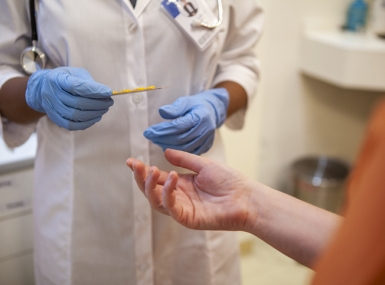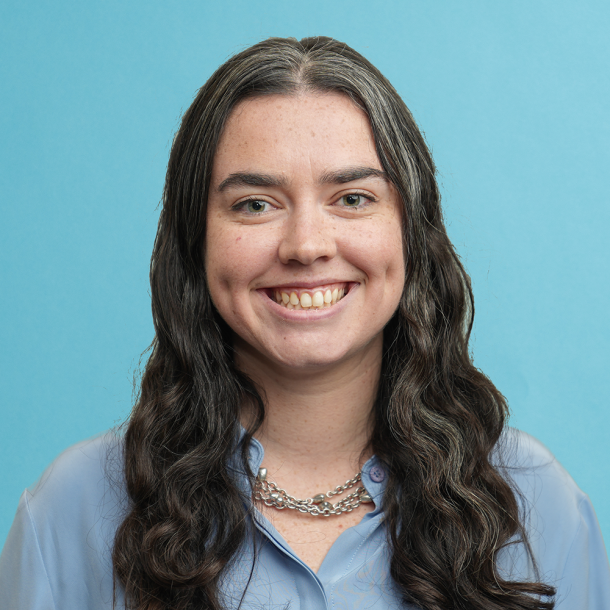Anti-violence program encourages young people to consider consequences

Key Takeaways
Safe and Sound, a violence prevention collaborative in Hillsborough County, Fla., recently launched a yearlong program aimed at young people to prevent community violence.
Firearms are now the leading cause of death for U.S. children and teens, surpassing vehicle-related deaths according to the Centers for Disease Control and Prevention. The program works with young men in Hillsborough County who have been arrested on gun charges, which can include possession of a firearm, gun-related threats and stealing that involves a firearm, according to Safe and Sound Executive Director Freddy Barton.
“What we’ve been working on is making sure the curriculum addresses, ‘Do you understand not that life is about the choices you make, it’s about the consequences of those choices?’” Barton said. “You pick up a firearm in anger and you think that this is the only path, and you end up firing that bullet — that bullet may not necessarily have the person’s name on it, but once it hits someone, it does, and you can’t take that life back that was taken once you’ve fired.”
The program is part of Hillsborough County’s broader effort to address community violence. The county’s $200,000 allocation will also fund a short film to raise awareness of the consequences of gun violence and a community response team to provide support for county residents in the aftermath of losing a loved one.
Since its launch about three months ago, none of the six participants have recommitted an offense or had any probation violations. Youths without solid support systems typically reoffend within 18 days, while fewer than 20 percent of teens who have gone through Safe and Sound have re-offended following completion of programming.
“When you build a program where the kids have buy-in and they feel that they have a voice, they come, they participate,” Barton said. “We’ve had our youth who are part of our program helping to lead community discussions on community violence and they talk about how and why they made the decisions that they did in an effort for us to figure out what we can do to prevent another kid from doing it, so we continue to do that work, and so far it’s working, but we know that we’ve got so much more to do.”
The first six months of the program runs on a three-phase plan, the first of which focuses on education surrounding community violence, which Safe and Sound sources from trauma centers and its educational partners, followed by personal experience awareness where participants engage with those impacted by community violence and the final phase is centered on preventing participants from recommitting a firearm-related offense, which can mean anger management or moral reconation therapy, depending on what each individual needs, Barton said.
“We do what’s called ‘layered education,’ so imagine it as taekwondo — everyone comes in at the very beginning and you go from white belt to yellow belt, you have to go through stages,” Barton said. “So, we create our curriculum so that some of it is self-paced, and then there’s a group layer on top of it, so everyone when they come into the program is going to be working on, ‘Here’s the anger management curriculum.’ Someone may be on Day One of this and someone else is maybe on Day Four, but everyone when we get to group level talks about the same thing.”
The final six months of the program prioritizes mentorship, Barton said.
Only 31 percent of the teen boys who have participated in Safe and Sound’s programming have an active male mentor in their lives, data shows, so Barton said the organization knew that mentorship had to be an integral aspect.
Most mentors come from Safe and Sound’s faith-based partners. Other partners include the Board of County Commissioners, the Children’s Board of Hillsborough County, the county’s sheriff’s office and public defender’s office.
“Kids don’t have that advocate for them sometimes, so we brought in the mentorship component to do two things — one just to stand up for these kids to say, ‘Judge, I know this young man, I’m working with him and I’m going to show up to court for this young man,’” Barton said. “The second reason is to give them that consistency, so once they exit out of the youth gun program after that six months, that mentor is going to stay connected with them weekly. ‘How are you doing in school?
“If you’re 16, 17, 18, let’s try to find you some type of positive employment, whether it’s part-time or whatnot, let’s get you to the interviews, let’s talk about how you’re feeling this week.’ So that’s going to be our tracking that we’re going to see, to make sure two things happen — one, that they don’t reoffend and two, that they’re starting to just change at least one thing about themselves for the positive.”
The program runs out of the organization’s reporting center, which was created out of funding from a 2020 Department of Juvenile Justice grant and serves as a 90-day alternative to incarceration for male teens who have committed non-violent offenses. Eligible youth attend school during the day and then go to the center from 3-8 p.m. to be in a structured, supervised environment. The center provides its youth transportation to and from programming as well as meals.
Thaddeus Wright, Safe and Sound’s reporting center manager, got involved with the organization after hearing about its mentoring opportunities at his church, he said.
“One of the things that I’ve learned from working here is when the kids initially come in with their parents, their first interaction with us, they come in kicking and scratching,” Wright said. “They don’t want to be here, they don’t want to participate in anything, they think it’s a waste of time. And we basically have to beg them to step foot into the center. After about two weeks, the funny thing is, they start calling, ‘Hey, I want to make sure you’re coming to pick me up today.’
“One kid in particular...his first day coming in, he couldn’t stand the place, he hated it. Then we had a three-day class about relationships and the morning of the second day, his mom called and was like, ‘Hey, I want to make sure you’re coming to pick up my son.’ I was like, ‘Yes, why do you ask?’ ‘Because he couldn’t stop talking about the program last night and he called me this morning at work and wanted to make sure that Mr. Thaddeus was coming to get him.’ So, we did something to turn a light on in his head and he was excited.”
Yasmin Smith’s son completed his time through the resource center in 2022, but she said that he enjoyed Safe and Sound so much that he asked to go back, so he continues to spend time at the facility. Her son’s favorite part of Safe and Sound is the mentorship.
“He said, ‘I like being around the guys —they show me man stuff like changing tires or tying ties and telling us about how to be better men when we grow up,’” Smith said. “So, whatever they’re doing in that program, I just hope it never closes down, because my son––he loves it, and I just want him to remain a participant.”
His grades have improved and he’s started collecting trash for the elderly people in their apartment building.
Participants take part in the center’s existing services — including life skills and job readiness training, mentoring, tutoring and group and individual counseling — in addition to other elements specifically related to community violence, including going to trauma centers and funeral homes and speaking to those who have experienced the death of a loved one as a result of community violence.
“When they sit in front of an individual who’s lost a family member to violence, the question from that mother is, ‘Why did you want to hurt my child or take my child’s life away?’” Barton said. “And their response is, ‘Well, I didn’t do that. I didn’t shoot your child,’ Yeah, but you picked up a firearm and you could have — do you understand the pain that I have in my life?”
Plans are in the works to have participants paint a mural alongside Hillsborough County residents who have lost someone to community violence, where they’ll talk through their respective experiences.
Safe and Sound also partners with men from Florida’s Corrections Transition Program (CTP) who have spent anywhere from 24-33 years in prison for a life sentence related to community violence. They participate in an exercise with the program’s teens that involves a mirror.
“I tell them, ‘Look at yourself in the mirror, you’re young, you’re full of life. You’ve got all the possibilities in the world in front of you,’” Barton said. “Now they put the mirror down and I have the [CTP] gentlemen stand in front of them and I say, ‘Now, think about if you make the choice to pick up a firearm in anger and you cause a destruction of life — the next time people in your community who love you, care about you, they see you, you look like these gentlemen here — you age that much.
“You’re 50, 60 years old, and all that time in between has been taken from you, so understand that when you make these choices, you’re not just affecting yourself, you’re affecting your family, your community, those who love you, those who know you.’ So, we’re putting all of these pieces together so that kids understand that this is not as glorious as you see in media and the rap videos and social media. This is really serious and important.”
Barton rejects comparisons to the reality television show “Beyond Scared Straight,” which shows at-risk youth the “harsh reality” of incarceration.
“We don’t treat this program like a detention center,” Barton said. “When you come into our facilities, we have basketball courts, we have a huge field, kids can go outside and play, we have a computer lab that was set up in part with the NFL as part of a social justice component, so this is not going to be a place that feels like you’re being penalized …We don’t take this approach where we’re getting in your head and say, ‘You’re screwed up.’ We don’t believe in that — it’s about educating them about the consequences of their choices.”
Attachments
Related News

DOJ terminates justice and public safety-focused grants
On April 22, the U.S. Department of Justice’s largest grant-making arm—the Office of Justice Programs—abruptly cancelled hundreds of grants awarded to county governments and other local jurisdictions and organizations. Approximately 365 grants have been identified for termination, which were estimated to be valued at $811 million at the time of awarding; it is unclear how much funding remained at the time of termination.

County Countdown – April 21, 2025
Every other week, NACo's County Countdown reviews top federal policy advocacy items with an eye towards counties and the intergovernmental partnership. This week features the ARPA reporting deadline, a budget reconciliation update and more

U.S. House reintroduces legislation to address the Medicaid Inmate Exclusion Policy
Two bipartisan bills aimed at addressing the Medicaid Inmate Exclusion Policy (MIEP) were recently reintroduced in the U.S. House of Representatives.
